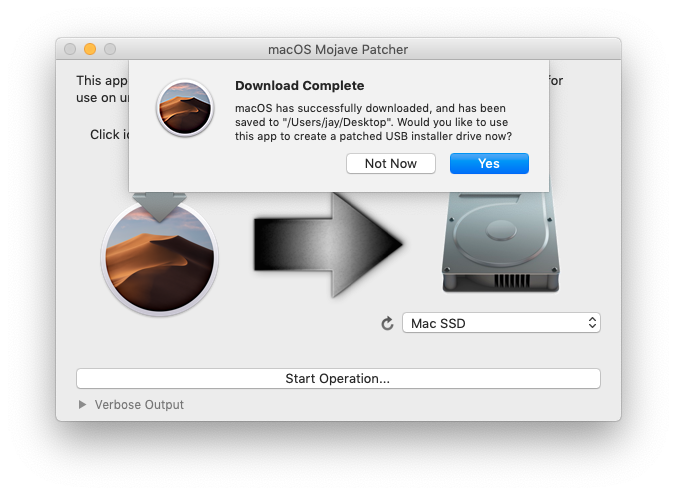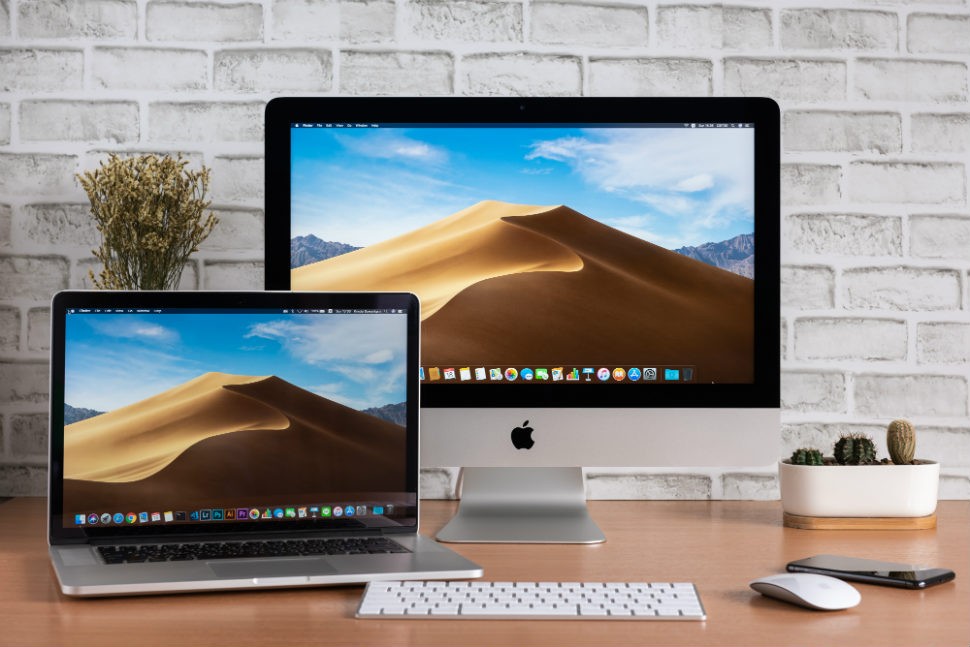Why Can't I Download Mojave On My 2015 Macbook Air
As expected, Apple has started shipping new Macs with macOS 10.15 Catalina. We’re still hesitant to recommend upgrading to Catalina, particularly if you use Mail, since reports of email data loss continue. Luckily, downgrading a new Mac from Catalina to 10.14 Mojave is possible for models other than the 16-inch MacBook Pro and the 2019 Mac Pro. Mac scripting expert (and author of the new book Moving to zsh) Armin Briegel has published a guide explaining how to roll back a new Mac that ships with Catalina to Mojave. Unfortunately, the process to install Mojave isn’t straightforward, requiring a Mojave Installer USB drive. It’s particularly fussy if your Mac is equipped with a T2 security chip since you have to set up an account before you can use Security Utility to enable booting from external drives. Regardless, you will have to erase the internal drive entirely before you can install Mojave due to Catalina’s bifurcated drive structure.
- Why Can't I Download Mojave On My 2015 Macbook Air 2
- Why Can't I Download Mojave On My Macbook Air
- Why Can't I Download Mojave On My 2015 Macbook Air Upgrade

Hi, I have a 2015 macbook air and I was still on High Sierra. Everything was going surprisingly well for a 5 years old machine, and after reading a bit on reddit about Mac OS Mojave (performance reviews were good) so I decided to update to secure better app support and updates for the coming years (I hope it will last still a good 2-3 years). My MacBook wouldn’t turn on, I booted it in recovery – I deleted the partition for the disc utility and started downloading a new OS (Yosemite I think), as I didn’t have wifi, I used the hotspot on my phone, however I had to leave the house and thought If I closed the MacBook it would put it to ‘sleep’ putting the download on hold. Alternatively, you can also choose to download macOS Mojave from the Mac App Store on your device, creating a bootable USB drive from the download file. You can find instructions for that here. But For now, we’ll be looking at how to reset your MacBook Air from the boot screen on your device. Hi, I found a solution for my issue. Hope it helps you. I made a reset to PRAM and SMC. Don't know why but after that, everything worked just fine. Never the less I can't say I'm happy with the mojave upgrade on my macbook pro mid 2012.
macOS Big Sur elevates the most advanced desktop operating system in the world to a new level of power and beauty. Experience Mac to the fullest with a refined new design. Enjoy the biggest Safari update ever. Discover new features for Maps and Messages. And get even more transparency around your privacy.
Why Can't I Download Mojave On My 2015 Macbook Air 2

Check compatibility
macOS Big Sur is compatible with these computers:
MacBook introduced in 2015 or later
MacBook Air introduced in 2013 or later
MacBook Pro introduced in late 2013 or later
Mac mini introduced in 2014 or later
iMac introduced in 2014 or later
iMac Pro
Mac Pro introduced in 2013 or later
View the complete list of compatible computers.
If upgrading from macOS Sierra or later, macOS Big Sur requires 35.5GB of available storage to upgrade. If upgrading from an earlier release, macOS Big Sur requires up to 44.5GB of available storage. To upgrade from OS X Mountain Lion, first upgrade to OS X El Capitan, then upgrade to macOS Big Sur.
Why Can't I Download Mojave On My Macbook Air
Make a backup
Before installing any upgrade, it’s a good idea to back up your Mac. Time Machine makes it simple, and other backup methods are also available. Find out how to back up your Mac.
Get connected
It takes time to download and install macOS, so make sure you have a reliable internet connection. If you’re using a Mac notebook computer, plug it into an AC power source.
Download macOS Big Sur
If you're using macOS Mojave or later, get macOS Big Sur via Software Update: Choose Apple menu > System Preferences, then click Software Update.
Or use this link to open the macOS Big Sur page on the App Store: Get macOS Big Sur. Then click the Get button or iCloud download icon.
Begin installation

After downloading, the installer will open automatically.
Click Continue and follow the on-screen instructions. You may find it easiest to start installation in the evening so that it can be completed overnight, if needed.
If the installer asks for permission to install a helper tool, enter the administrator name and password that you use to log in to your Mac, then click Add Helper.
Allow the installation to be completed
Why Can't I Download Mojave On My 2015 Macbook Air Upgrade
Please allow the installation to be completed without putting your Mac to sleep or closing its lid. Your Mac may restart, display a progress bar or show a blank screen several times as it installs both macOS and related updates to your Mac firmware.
Stay up to date
After installing macOS Big Sur, you will be notified when updates to macOS Big Sur are available. You can also use Software Update to check for updates: Choose Apple menu > System Preferences, then click Software Update.
Or get macOS Big Sur automatically
If you're using OS X El Capitan v10.11.5 or later and your App Store preferences or Software Update preferences are set to download new updates when available, macOS Big Sur will download conveniently in the background, making it even easier to upgrade. A notification will inform you when macOS Big Sur is ready to be installed. Click Install to get started, or dismiss the notification to install later. When you're ready to install, just open the file named Install macOS Big Sur from your Applications folder.
Learn more

- If the installer shows a list of apps that are not optimised for your Mac, learn about 32-bit app compatibility, then choose whether to proceed with the installation.
- For the strongest security and latest features, upgrade to macOS Big Sur. If you have hardware or software that isn't compatible with Big Sur, you might be able to install an earlier macOS.
- You can also use macOS Recovery to reinstall the macOS you're using now, upgrade to the latest compatible macOS, or install the macOS that came with your Mac.
